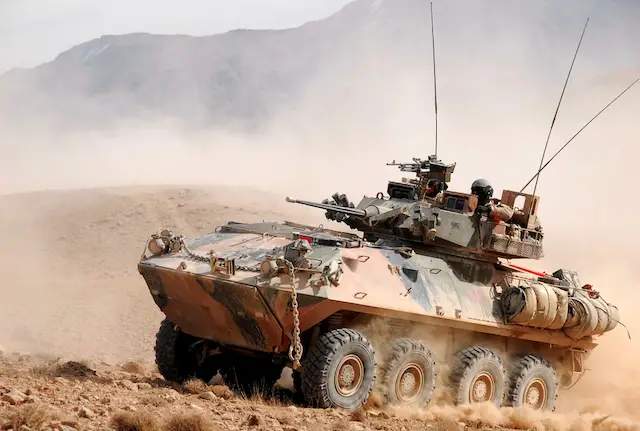|
|
|||
|
Defence & Security News - (Australia)
|
|||
|
|
|||
| Australia to extend Land 400 Phase 2 risk management period | |||
|
The Australian Department of Defence announced on 1 April, that LAND 400 Phase 2 Risk Management Activities for the Army’s Mounted Combat Reconnaissance Capability Request for Tender evaluation period would be extended, having received the Government’s approval.
|
|||
|
|
|||
 An ASLAV in Afghanistan (Source: Australian Army) |
|||
|
|
|||
|
LAND 400 is a project, which will modernize the fleet of vehicles in service with the Australian Army and at the same time provide the ground for further development of the country’s defence industrial capabilities. As the LAND 400 RMA was planned before the launch of the new Industrial Policy, the Department of Defence has reconsidered the timeframe, in order for the RMA to better match the goals of the industrial policy. According to Kim Gillis, the Deputy Secretary Capability Acquisition and Sustainment Group (CASG), Planning for the RMA and development of the RMA contracts, under which the work will be conducted with selected Tenderers, was completed prior to the launch of the Government’s new Defence Industry Policy Statement (DIPS).” “The strong alignment of the RMA with the DIPS will deliver benefits to both industry and Defence. This review will ensure Defence can obtain the best possible solution for Australian industry whilst delivering the required capability to Army. The review of the Australian industry aspects of the RMA will ensure that these benefits can be delivered. This review is further evidence of our commitment to improving the way Defence and Industry work together. This review will have no effect on the planned in-service date for the Army’s Mounted Combat Reconnaissance Capability”. The Mounted Combat Reconnaissance Capability seeks to replace the GDLS Canada ASLAV 8x8, with 225 new vehicles, until 2021. The Australian Army is searching for a platform that would feature state-of-the-art technology transforming it into a system, capable of operating in a joint, networked environment. The new vehicle will provide better protection. It will be procured in different variants, namely reconnaissance, C2, joint fires, surveillance, ambulance and, repair and recovery. |
|||














